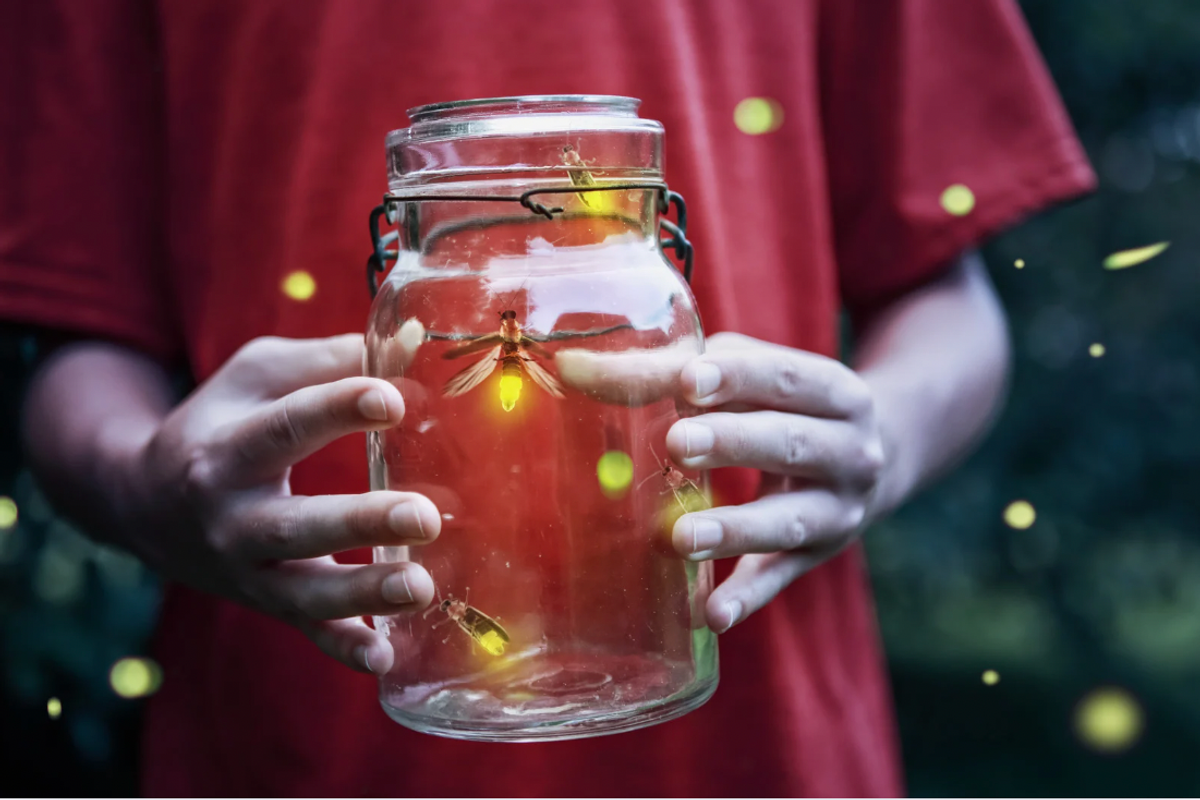'Last trace of magic': Americans are changing their backyards to save fireflies from extinction
Firefly lovers are taking action after scientists sound the alarm.

If you're thinking you don't see as many fireflies as you did when you were a kid, you're right.
There’s nothing quite like spending a summer night surrounded by a moving constellation of fireflies. Suddenly, those fae realms in stories of old feel like they very well could take shape in front of our eyes. It’s one of Mother Nature's most miraculous gifts for the way that it ignites the inner child in us all.
And yet, there have been recent claims that soon, the gentle twinkling of these universally loved insects—also known as lightning bugs for those of us from the South—might soon become a fairy tale in its own right. According to a 2024 study in Science of The Total Environment, firefly populations in North America are declining.
There are four major reasons for this (and surprisingly, they all have to do with human interference):
@ricoexplains Fireflies — those glowing icons of summer nights — are quietly vanishing. And artificial light might be their biggest threat. This short video explains the real science behind why fireflies are disappearing, and what we can do to help. Sources: – Lewis, S. et al. (2020). A global perspective on firefly extinction threats. BioScience, 70(2), 157–167. – Firefly Conservation & Research. Xerces Society. – International Dark-Sky Association. #fireflies #lightpollution #biodiversity #scienceexplained #shorts #ricoexplains
Habitat loss: Paved streets and urban environments have replaced much of the moist environments like wetlands, marshes, and damp woodlands where fireflies thrive.
Light pollution: This is an even bigger threat than habitat loss, studies have found. While the glow of fireflies delights human audiences, its main function is a mating ritual. However, the exposure to artificial light from streetlights, billboards, etc., disrupts not only the mating cycle, but also the larval stage.
Pesticides: Certain commonly used chemicals kill not only fireflies directly, but snails and slugs, which firefly larvae consume. Not to mention they also contaminate their water source.
Climate change: Warmer temperatures also disrupt mating cycles and changed precipitation levels further contributes to unstable habitats.
Understandably, people are heartbroken to hear this news. Across social media, folks have noted that indeed, they see a lot less of these bioluminescent bugs compared to years prior, and shared their sadness that future generations might not get to experience such natural beauty.
@aliyah.noels midsummer fireflies in Appalachia 🕯️#fireflies #midsummer #solctice #appalachia #appalachianmountains #fairycore #fairy
“I know that losing the bees would be the death of us all, but it would be somehow worse to lose the fireflies. Like killing the last trace of magic in the world.”
“This explains a lot. I wondered what happened to them, used to see them all the time when I was a kid…now where I'm at, they're basically non-existent.”
“I remember when I was little in the 90s fire flies would be EVERYWHERE at night and now you're lucky to see them at all. I miss that.”
“I wondered why I didn’t see fireflies or salamanders as an adult. I had so many excuses and eventually learned it’s our fault they’re all dying. It was magical finding salamanders under logs with my mom and catching lightning bugs in a jar.. kids these days don’t get that. They get tablets.”
“Fireflies bring me back to a time with less technology and more peace.”
Still, it’s not all doom and gloom. Several also shared how they do their part to help revive firefly populations, particularly by removing toxic pesticides from their yard maintenance.
As one person wrote, “a few years ago I stopped treating my yard. Last year I let part of it over grow and I had an abundance of fireflies and dragonflies. It's absolutely beautiful to watch at night.”
According to the study, we can also mitigate light pollution by incorporating dark-sky-friendly lights. This of course doesn’t offset the light pollution brought by street lights and other city fixtures (as with most conversation efforts, it takes both individual contribution and systemic change) but regardless, small actions add up.
One last helpful note: Ben Pfeiffer, founder of Firefly Conservation and Research and Texas-certified master naturalist shared that “while fireflies are disappearing in many areas, mainly due to habitat loss from residential, commercial, and industrial development. They are doing well in places [where] they are protected.”
“We won’t be the last generation to see fireflies,” he affirmed. What is actually threatened, he noted, is the “biodiversity” of previous firefly generations. “What these species get replaced with is the common firefly Photinus pyralis [which] is more of a habitat generalist and can tolerate more habitat types.”

So, while we haven’t necessarily seen the last of these magical insects, it is nonetheless a wake up call if we want to continue basking in their glow.

